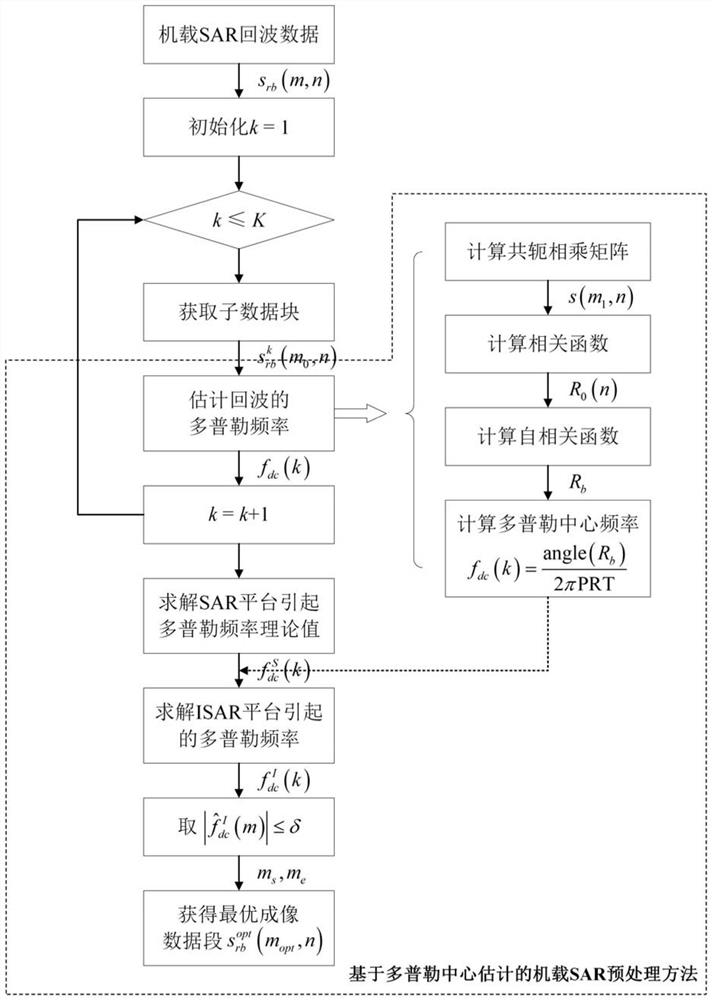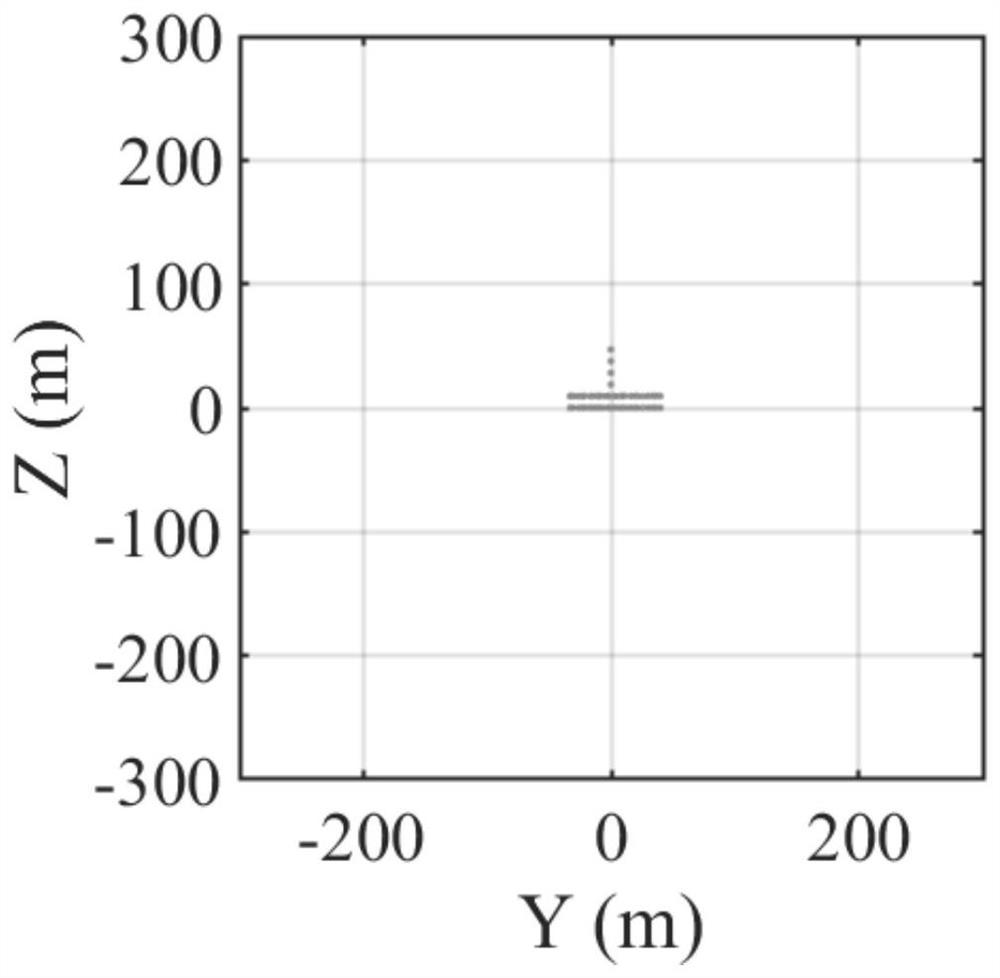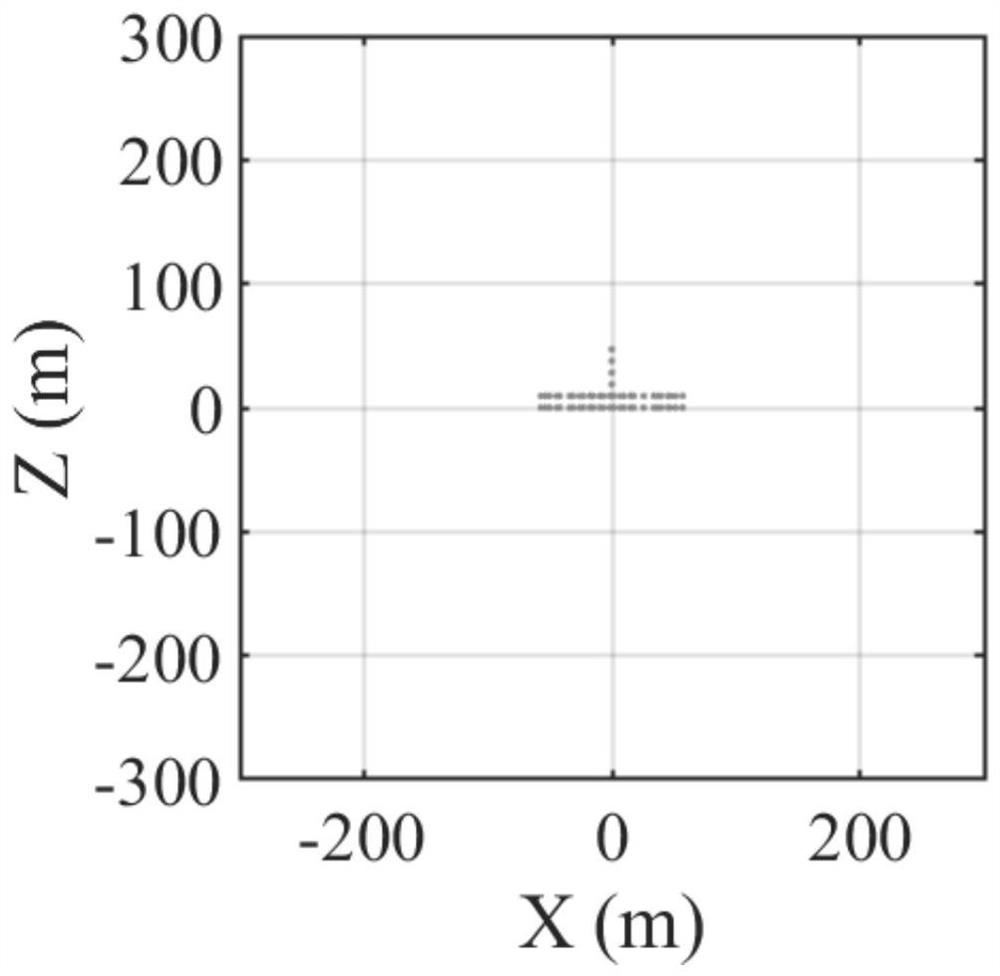Airborne SAR preprocessing method based on Doppler center estimation
A Doppler-centered and pre-processing technology, which is applied in the direction of radio wave reflection/re-radiation, re-radiation, and measurement devices, can solve the problems of SAR image two-dimensional defocus and slow processing efficiency, and improve imaging processing Efficiency, solution to two-dimensional defocus, and the effect of reducing the impact on imaging
- Summary
- Abstract
- Description
- Claims
- Application Information
AI Technical Summary
Problems solved by technology
Method used
Image
Examples
specific Embodiment approach 1
[0039] Specific implementation mode one: combine figure 1 Describe this embodiment, the specific process of the airborne SAR preprocessing method based on Doppler centroid estimation in this embodiment is:
[0040] Step 1. Obtain the airborne SAR echo data, and perform range compression on the obtained airborne SAR echo data by using the range-dimension matched filter in the range-Doppler (range Doppler, RD) algorithm, and obtain the airborne SAR echo data after the range compression. SAR echo data, record the airborne SAR echo data after distance compression as s rb (m,n);
[0041] Among them, m is the pulse sequence number of the echo, n is the fast time sequence number; m=1,2,...,N a , N a is the number of pulses, n=1,2,…,N r , N r is the number of fast time sampling points;
[0042] Step 2, initialize the sub-data block sequence number k=1, set the sub-data block pulse number N a0 , 1a0 a ; The number of sub-blocks is
[0043] In the formula, is the rounding do...
specific Embodiment approach 2
[0059] Specific embodiment two: the difference between this embodiment and specific embodiment one is that the sub-data block in the step four The expression is:
[0060] subblock
[0061] Other steps and parameters are the same as those in Embodiment 1.
specific Embodiment approach 3
[0062] Specific embodiment three: the difference between this embodiment and specific embodiment one or two is that the conjugate multiplication matrix s(m 1 , n) is expressed as:
[0063]
[0064] In the formula, m 1 is the conjugate multiplication matrix s(m 1 ,t r ) pulse number, m 1 =1,2,...,N a0 -1,[·] H is a conjugate function.
[0065] Other steps and parameters are the same as those in Embodiment 1 or Embodiment 2.
PUM
 Login to View More
Login to View More Abstract
Description
Claims
Application Information
 Login to View More
Login to View More - R&D
- Intellectual Property
- Life Sciences
- Materials
- Tech Scout
- Unparalleled Data Quality
- Higher Quality Content
- 60% Fewer Hallucinations
Browse by: Latest US Patents, China's latest patents, Technical Efficacy Thesaurus, Application Domain, Technology Topic, Popular Technical Reports.
© 2025 PatSnap. All rights reserved.Legal|Privacy policy|Modern Slavery Act Transparency Statement|Sitemap|About US| Contact US: help@patsnap.com



